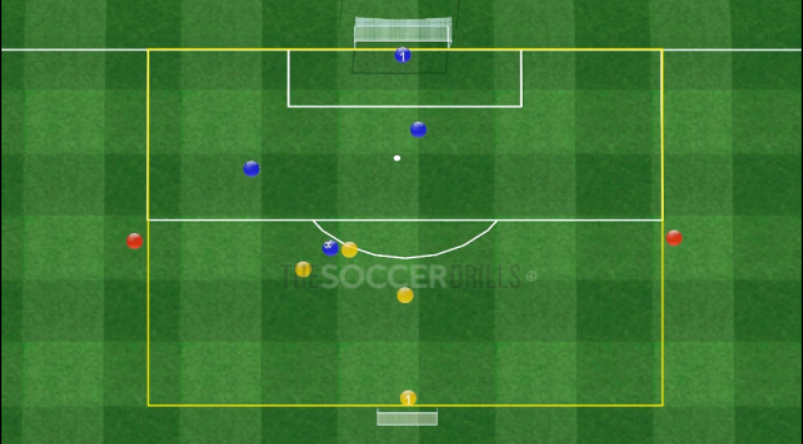
Transitions with support from forwards players
To start the attack playing wide and to identify when a good moment is to play inside. To make a run in order to lose the markers in the right moment is key to finally get the ball or not.

To start the attack playing wide and to identify when a good moment is to play inside. To make a run in order to lose the markers in the right moment is key to finally get the ball or not.

We will practice ball conservation, width, game pace, change of pace, shifting, pressing, coverages and defensive coordination, all at the same time.

There are defensive and offensive concepts which will be easy to practice in whole. A simple provoking rule will help your team practice these two concepts.

If your team, while it is attacking, keeps a balanced structure, it will be ready to defend rapidly in an appropriate way when losing the ball. It will make your players be better at finishing, at pressing after losing the ball, in the counter attack, in the previous moves to the ball loss etc.

To bring the ball from one side to other and then cross it, it is an offensive tactical objective. In this drill, with the double of box as the dimensions, we will make our team practice a lot of crossings which will allow them to improve both defense and attack.

A partial structure with a specific work for the defensive players. What we used to do with boring and ineffective attacking actions against the defenders, we do it now with a useful and attractive game for the players.

A drill with the double of the box as the dimensions. We will put rules to reward the high press and the press after losing possession. At the same time we will work on how we would be able to overcome these two situations to achieve a good position for finishing.

If a team, while progressing on the field, opts for switching the play, for playing wide, for alternating passes to the interior and the exterior and it is positionally balanced, will be successful when attacking. This drill is a conditioned game that will orientate your players.

Tactical rondos with a high demand of defensive concepts. If your defenders in the rondos do not delay, they are learning how to not delay the opponents attack in the games.

The ideal player is the one who manages either the offensive and defensive tactical situations. The direct attack looking for the second ball Is one of the parts of the game that the coaches need to know how to manage despite it might not be his most preferred part. As coaches, our objective has to be fo our players to learn as much as possible, not just only about what we like.